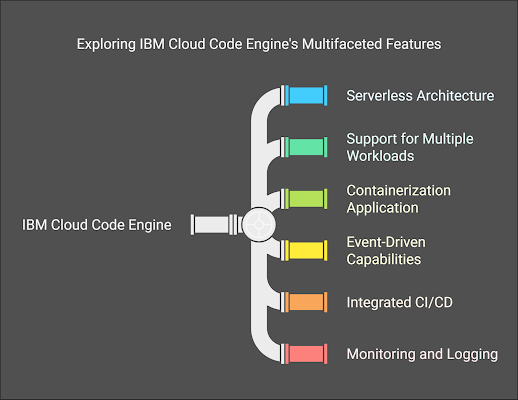In the rapidly evolving landscape of cloud services, API gateways play a crucial role in managing and securing APIs. This document provides a detailed comparison between Tyk and AWS API Gateway, two prominent solutions in the API management space. We will explore what API gateways are, the functionalities of Tyk and AWS API Gateway, their features, pros and cons, and key points of comparison to help you decide when to choose one over the other.
What is an API Gateway and Why is it Required?
An API gateway is a server that acts as an intermediary between clients and backend services. It is responsible for request routing, composition, and protocol translation, allowing clients to interact with multiple services through a single endpoint. The need for an API gateway arises from the complexity of managing multiple microservices, ensuring security, and providing a unified interface for clients. Key functions of an API gateway include:
Request Routing: Directing incoming requests to the appropriate backend service.
Load Balancing: Distributing traffic across multiple instances of services.
Security: Implementing authentication, authorization, and data encryption.
Rate Limiting: Controlling the number of requests a client can make to prevent abuse.
Analytics and Monitoring: Providing insights into API usage and performance.
Overview of Tyk and AWS API Gateway
Tyk API Gateway
Tyk is an open-source API gateway and management platform that provides a robust set of features for managing APIs. It is designed to be lightweight and easy to deploy, offering flexibility for both on-premises and cloud-based environments. Tyk supports various protocols, including REST, GraphQL, and WebSockets, making it suitable for diverse applications.
AWS API Gateway
AWS API Gateway is a fully managed service provided by Amazon Web Services that allows developers to create, publish, maintain, monitor, and secure APIs at any scale. It integrates seamlessly with other AWS services, making it a popular choice for organizations already using the AWS ecosystem. AWS API Gateway supports RESTful APIs and WebSocket APIs, providing a comprehensive solution for API management.
Features Comparison: Tyk vs AWS API Gateway
Tyk Features
Open Source: Tyk is open-source, allowing customization and flexibility.
Self-Hosted or Cloud: Can be deployed on-premises or in the cloud.
Multi-Protocol Support: Supports REST, GraphQL, and WebSockets.
Rich Dashboard: Provides a user-friendly dashboard for monitoring and analytics.
Plugins and Middleware: Supports custom plugins for extended functionality.
Rate Limiting and Quotas: Advanced rate limiting and quota management.
Security Features: OAuth, JWT, and API key management.
Learning Curve: Some users might find Tyk easier to learn and manage due to its simpler setup process, while AWS API Gateway can have a steeper learning curve for those unfamiliar with AWS services.
AWS API Gateway Features
Fully Managed: No need to manage infrastructure; AWS handles scaling and availability.
Integration with AWS Services: Seamless integration with AWS Lambda, IAM, and other AWS services.
API Versioning: Built-in support for versioning APIs.
Monitoring and Logging: Integrated with AWS CloudWatch for monitoring and logging.
Security: Supports AWS IAM, API keys, and custom authorizers.
Caching: Built-in caching capabilities to improve performance.
Learning Curve: AWS API Gateway can have a steeper learning curve for those unfamiliar with AWS services.
Pros and Cons on Tyk API Gateway
Pros:
Flexibility in deployment options.
Extensive customization capabilities.
Strong community support due to its open-source nature.
Cons:
Requires more management and maintenance if self-hosted.
May have a steeper learning curve for new users.
Pros and Cons on AWS API Gateway
Pros:
Easy to set up and manage with a user-friendly interface.
Highly scalable and reliable due to AWS infrastructure.
Comprehensive security features integrated with AWS services.
Cons:
Can become costly with high usage and additional features.
Limited customization compared to open-source solutions.
Key Points of Comparison
When to Choose Tyk
If you require a highly customizable solution that can be tailored to specific needs.
When you prefer an open-source solution that can be self-hosted.
If you need support for multiple protocols beyond REST.
When you want to avoid vendor lock-in and have control over your API management infrastructure.
If cost is a major concern and you are willing to manage your own infrastructure.
For projects where open-source flexibility is crucial.
When to Choose AWS API Gateway
When you are already heavily invested in the AWS ecosystem and want seamless integration with other AWS services
When you prefer a fully managed service that reduces operational overhead.
If you need built-in monitoring, logging, and security features without additional setup.
When you anticipate high scalability needs and want to leverage AWS's infrastructure.
Conclusion
Both Tyk and AWS API Gateway offer robust solutions for API management, each with its unique strengths and weaknesses. The choice between the two largely depends on your specific requirements, existing infrastructure, and preferences for customization versus ease of management. By understanding the features, pros, and cons of each, you can make an informed decision that aligns with your organization's goals.

.png)
.png)
.png)
.png)
.png)
.png)
.png)
.png)
.png)

.png)
.png)
.png)

.png)
.png)

.png)
.png)
.png)
.png)